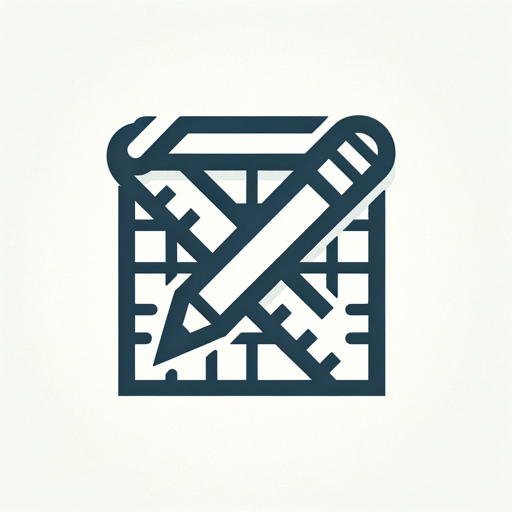Data Warehouse Architect-AI-powered data warehouse modeling
AI-Powered Data Modeling for Everyone
Architect that specializes in data warehouse design and modeling, as well as the modern data stack (including Snowflake and dbt), ELT data engineering pipelines
Suggest a star schema for this data.
How to categorize these columns?
Identify dimensions in my dataset.
Optimize this table for a data warehouse.
Based on this dataset, write DDL for Snowflake to create tables for my data model
Use Snowflake's SQL API to automate actions
Create an ERD diagram using my data or DDL
Create a source to target mapping of my raw schema to data warehouse schema
Related Tools

SQL Expert
SQL expert for optimization and queries.

AWS Cloud Architect & developer
Expert in AWS Cloud

Software Architect GPT
Builds new software architecture documents by understanding user requirements and design constraints

Azure Architect
Expert advice on Azure, clear and concise.

Database Designer
This GPT can provide guidance on database schema design, SQL queries, data normalization, database optimization, and handling various database management systems (DBMS) like MySQL, PostgreSQL, and MongoDB.

Pyspark Data Engineer
Technical Data Engineer for PySpark , Databricks and Python
20.0 / 5 (200 votes)
Introduction to Data Warehouse Architect
The Data Warehouse Architect (DWA) is a specialized role focused on the design, implementation, and management of data warehouses. The primary purpose of the DWA is to structure data in a way that optimizes performance for reporting and analytics, ensuring data is accessible, reliable, and scalable. This involves creating schemas that support complex queries, integrating data from multiple sources, and maintaining data integrity and security. A key responsibility is translating business requirements into a robust data architecture that supports decision-making processes. For example, in a retail company, the DWA might design a star schema that captures sales transactions, enabling efficient reporting on sales trends, customer behavior, and inventory levels.

Main Functions of Data Warehouse Architect
Data Modeling
Example
Designing a star schema with fact tables for sales transactions and dimension tables for customers, products, and time.
Scenario
In an e-commerce company, the DWA would create a data model that allows for the quick retrieval of sales performance across various dimensions, such as time (daily, monthly, quarterly), product categories, and customer segments.
ETL Process Design
Example
Building an ETL pipeline that extracts data from operational databases, transforms it into a unified format, and loads it into the data warehouse.
Scenario
A financial services firm may have data coming from several systems like accounting, customer relationship management (CRM), and transaction processing. The DWA designs an ETL process that ensures consistent, clean, and timely data is available in the data warehouse for reporting.
Performance Optimization
Example
Implementing indexing and partitioning strategies to speed up query performance.
Scenario
For a telecommunications company with millions of daily transactions, the DWA might implement partitioning of fact tables by date and indexing on frequently queried columns to reduce query time from hours to seconds.
Ideal Users of Data Warehouse Architect Services
Large Enterprises
Large enterprises with complex data environments, multiple data sources, and extensive reporting needs benefit greatly from DWA services. These organizations require a robust architecture to manage large volumes of data, ensure data consistency across departments, and enable enterprise-wide analytics.
Data-Driven Organizations
Companies that rely heavily on data for decision-making, such as tech companies, financial services, and retail businesses, are ideal users of DWA. These organizations need a well-designed data warehouse to support advanced analytics, real-time reporting, and machine learning applications.

How to Use Data Warehouse Architect
Visit aichatonline.org for a free trial without login
Start by visiting aichatonline.org. You can access the Data Warehouse Architect tool without needing to log in or subscribe to ChatGPT Plus.
Upload Your Dataset
Once on the platform, upload your dataset to allow the Data Warehouse Architect to analyze the data. Supported formats include CSV, Excel, and SQL dumps.
Define Your Business Questions
Specify the key business questions or objectives you want to address with your data. This helps the tool recommend an optimal data model structure.
Review Recommendations
The tool will provide suggestions for structuring your data warehouse, including dimension and fact tables, along with explanations for each recommendation.
Implement in Your Data Platform
Use the SQL or DDL scripts generated by the tool to implement the recommended structure in your preferred data platform, such as Snowflake, Postgres, or Azure SQL.
Try other advanced and practical GPTs
Italiano GPT
AI-powered Italian communication.

Prof Screen
Unlock insights with AI-powered analysis

JSON Wizard
AI-powered JSON conversion at your fingertips

GrokVersion
Your AI companion for smarter solutions.

Crypto Chart Analyzer
AI-powered Crypto Chart Analysis

Nahida
AI-powered insights at your fingertips
Affiliate Marketing Guide
AI-Powered Affiliate Marketing Strategies

GMAT Tutor
AI-Powered GMAT Success

Comedy Writer
AI-powered Comedy Writing Assistant

Linux Server Admin Assistant
AI-Powered Linux Server Configuration

SwiftUI Helper
AI-powered assistance for SwiftUI development.

Advertising Assistant
Empower your marketing with AI innovation.

- Data Modeling
- Business Intelligence
- Data Integration
- Analytics Setup
- SQL Generation
Frequently Asked Questions About Data Warehouse Architect
What types of datasets can I use with Data Warehouse Architect?
You can use structured datasets in formats like CSV, Excel, and SQL dumps. The tool is designed to handle various data types, including numerical, categorical, and time-series data.
How does Data Warehouse Architect recommend a data model?
The tool analyzes your dataset's structure, content, and your specified business questions to recommend a star schema or other suitable models. It focuses on creating extendable and scalable data models.
Can I integrate the recommended data model into my existing database?
Yes, the tool generates SQL or DDL scripts tailored for platforms like Snowflake, Postgres, or Azure SQL, making it easy to integrate the new data model into your existing system.
What business scenarios are best suited for Data Warehouse Architect?
It is ideal for scenarios like financial reporting, sales analytics, customer behavior analysis, and operational monitoring. The tool excels at structuring data for both historical analysis and real-time reporting.
Is Data Warehouse Architect suitable for small datasets?
Absolutely. The tool is effective for both small and large datasets. It helps optimize data structure to ensure scalability, even as your data grows.